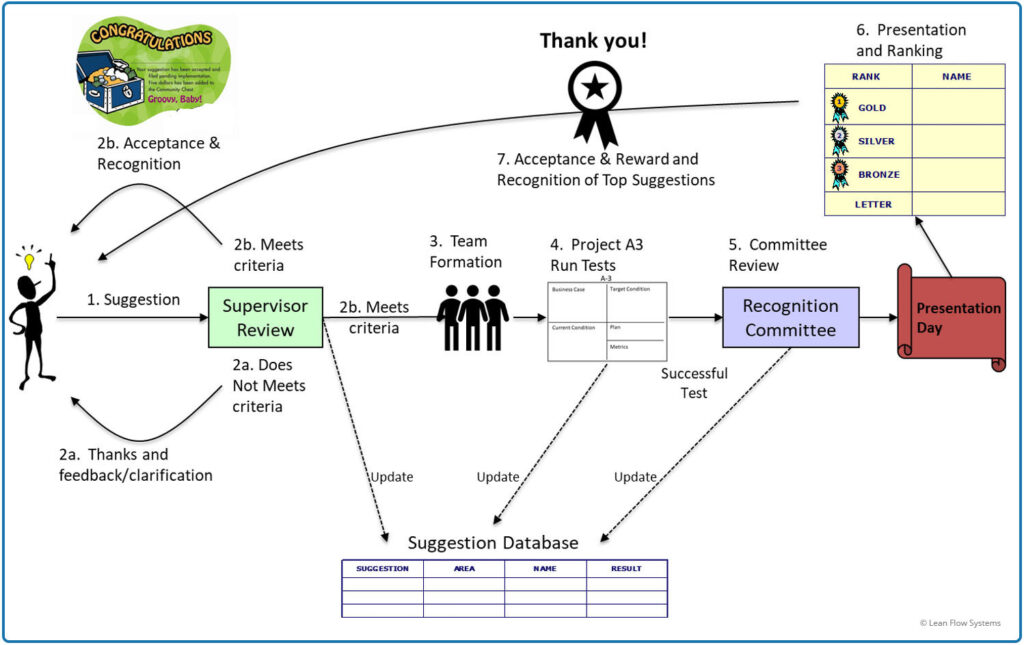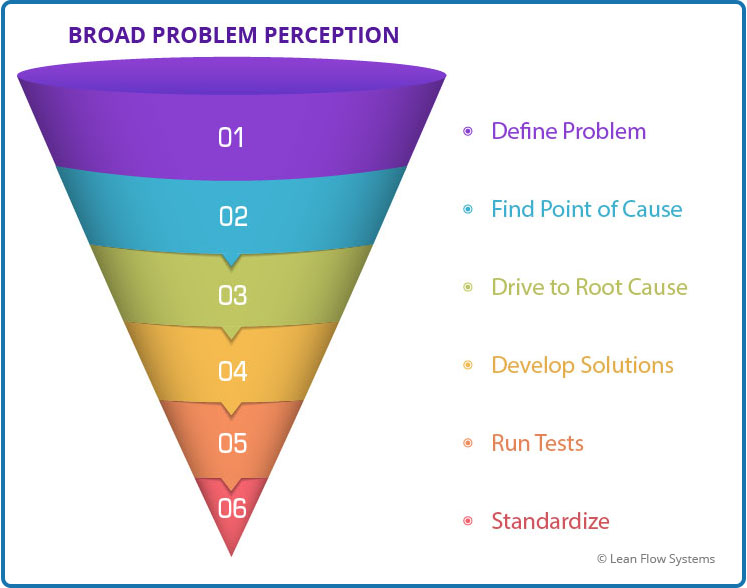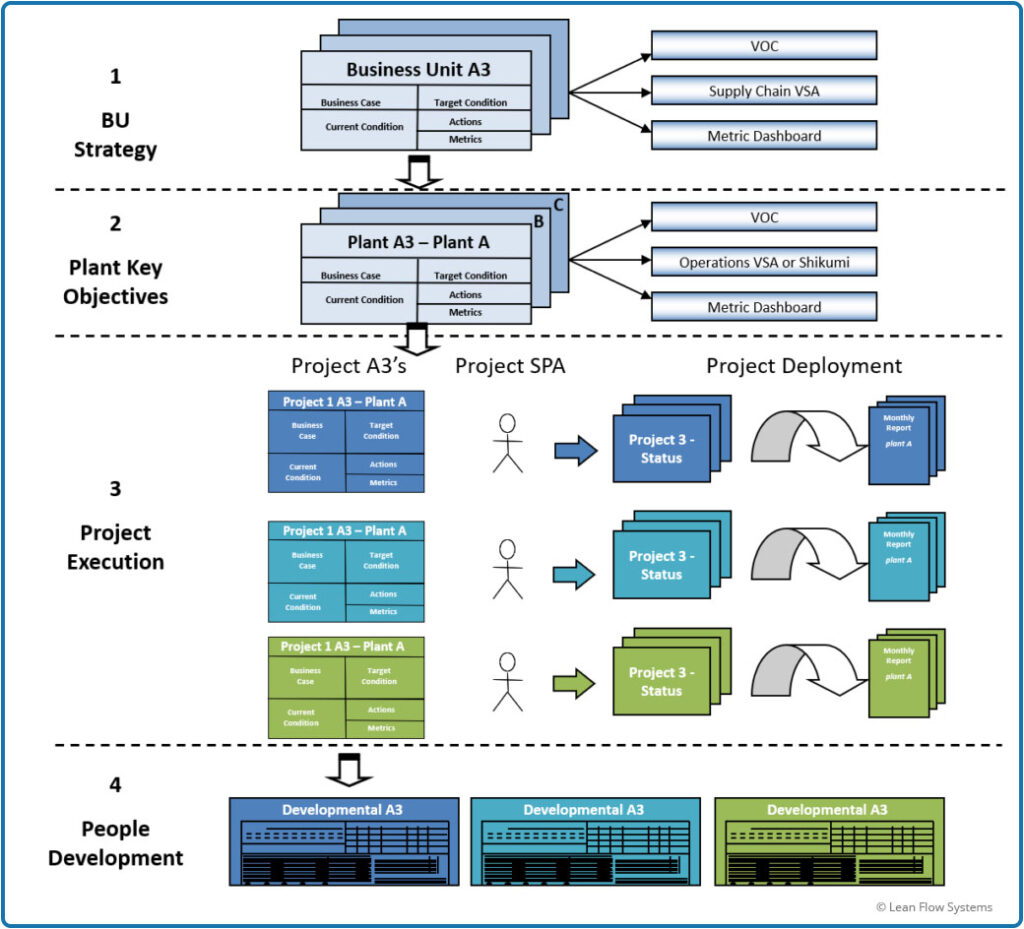Home » Improvement
IMPROVEMENT DESIGN


The Pursuit of Excellence
LFS takes a systematic approach to problem-solving. The goal is to make problems clear to all employees at all levels and to facilitate teamwork to solve these problems. The improvement process is triggered in two ways:
- Andon signal indicates that a process is not meeting the performance standard.
- Employee suggestions and ideas to improve the process.
The Root Cause Problem Solving process is launched to solve problems quickly using methods like the “Five Whys” or the Ishikawa (Fishbone) Diagram. The scientific method of problem solving is used to ensure a disciplined approach: Problem, Cause, Solution, Action, Measure. If the team cannot solve the problem then more advanced Data Analysis tools are employed. Strategic Planning is linked to the process, ensuring that product, engineering and capital decisions take into consideration the problems being triggered and suggestions of the team.
Improvement Design Tools
When intuition, data and facts are united with the scientific method of problem solving, good things happen fast! Following are the key elements of a great Improvement Design:
- Andon – A clear signal that there is a problem.
- Root Cause Problem Solving – Problem, Cause, Solution, Action, Measure, at all levels.
- Improvement Events – Organizing the team around improvement and culture change.
- Data Analysis – Powerful analysis for complex issues.
- Strategic Planning and Deployment – Problem solving at the highest level.
Andon

Binary Signals
It can be hard to tell when someone has a problem. Sometimes we are not even aware of our own problems. It’s natural, for instance, for someone to want to solve a problem on their own. It may give them great satisfaction to do so. Or maybe they feel it’s a negative reflection on their abilities if they have to call for help. On the other side, leaders in today’s fast-paced world are inundated with demands on their time and cannot always tell when their team truly needs their support.
This is where Andon signals come in. Andon means light in Japanese. But in lean systems, it means “There is a problem, something needs attention”. It is powerful in its simplicity and purpose. We use Andons to create a visual workplace, where problems are easily seen. These signals can be lights, empty space, sounds, kanban cards, etc… But at its heart, an Andon signal makes it clear and binary when people, processes and equipment need attention. They are a way of taking some of the guesswork out of the question “What problems do I have right now?”
Suggestion System

Appreciation
Appreciation is the fuel that powers a world of trust and happiness. These are words to embrace and live by. The world is a mirror, what you put out is what you get back. The more a team is appreciated for their value, the more value they return back to the operation. This giving becomes a way of life in great businesses.
Rewards and Recognition Programs are the way to build culture and drive real business value. But they don’t happen on their own, they need to be built with attention to business needs and process design.
Root Cause Problem Solving

Eliminating Waste
How frustrating is it to fix the same problem multiple times? How deflating is it to your team? It feels like running on a treadmill: lots of energy expended and no motion forward! Root Cause Problem Solving, rooted in the Scientific Method, is the tool for solving problems for good. And to do it well takes discipline, data and a bias to test ideas.
It starts with broad problem perception. We move down the funnel, from top to bottom, starting with a clear definition of the problem, getting to the point of cause and driving to the root cause. Once we’ve done this we can move forward more confidently with developing potential solutions. We run Improvement trials until a solution is found. We standardize new processes to lock in the changes and develop a check procedure to test whether problems have truly been solved to root.
Improvement Events

Culture Change Jump-Start
Driving culture change is hard work. It’s not always clear where to start and how to rally the troops. Improvement Events can be used to jump-start a lean improvement initiative.
It is useful to think of improvement as two cycles linked together: an Improvement Loop and a Standardization Loop. The Improvement Loop, where work is studied and waste eliminated, is the starting point. This Loop subsequently feeds into the Standardization Loop, where improvements are documented through Standard Work and policies that lock in progress. The Standardization Loop then feeds back into the Improvement Loop. Consequently, these two loops feed into each other, setting up the “Virtuous Cycle” of continuous improvement. Improvement Events inject energy into this cycle.
Improvement events are carefully selected following a rigorous series of steps to executing them as follows:
- Plan – Meet with Leaders, Select Area, Determine Data Needs, Finalize Plan
- Prepare – Gather and Organize Data, Develop Training Material, Communicate to Floor Team, Organize Logistics
- Training – Clarify Roles, Train Event Leaders, Train Participants
- Execute – Grasp the Current State, Summarize Observations, Generate Improvement Ideas, Test Ideas, Standardize
Data Analysis

Technical Prowess
World-class business concerns merge great people systems with powerful technology. Some problems cannot be solved to root cause without advanced analytics. Technology is everywhere and is powered by data and computing. Some examples: graphing demand versus DC coverage (figure above), analyzing stocking strategies, building simulation and optimization models to forecast scenarios, developing AI applications, automating repeatable tasks.
Strategic Planning and Deployment

All Together Now
Strategic Planning has evolved over the years. In the old days, Management By Objectives (MBO) was the approach, where executive leadership would provide high-level objectives and allow their teams a wide berth in figuring out how to achieve them. This often led to disconnected and fragmented efforts.
This process is very tight in great lean companies. As a result, efforts are synchronized to keep the team aligned and pulling in the right direction. Everyone is better focused on both the “what” and the “how”, from the Business Unit level through the various operations and locations, down to specific projects on the floor. The teams present concise status updates that facilitate timely feedback and redirection as needed. Projects are connected to developmental plans for team members.